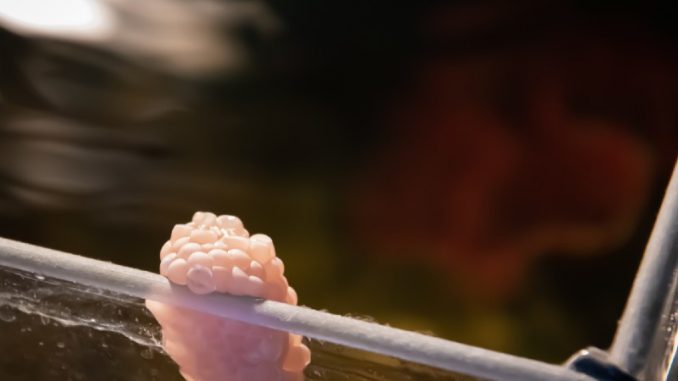
Did you find a snail in your aquarium where no snail should be? It happens to the best of us. Tiny snail eggs hop a ride into your tank on a new decoration, piece of wood, or aquatic plant, and before you know it, you’ve got snails.
Or maybe you chose to put a few snails in your aquarium as cleaners. But you didn’t think of the consequences of their prolific reproduction.
Or just maybe you don’t mind having lots of snails and want to use them as a source of nutrition for your other aquarium inhabitants. Not all hobbyists view snails as pests. They have many useful qualities, but sometimes you need moderation. Kind of like chocolate cake.
Regardless of what category you fall into, you do need to know the egg behavior and appearance of different snail species so that you can properly care for or eliminate them.
Friend or foe, snails reproduce rapidly and when left unchecked, these prodigious egg producers can easily spur an infestation in your community tank.
I’ll explain the appearance of different snail species’ eggs, the gestation period, how to prevent the eggs from taking over, and how to dispose of them if that’s what you choose to do.
TABLE OF CONTENTS
Aquarium Snail Eggs Facts & Overview
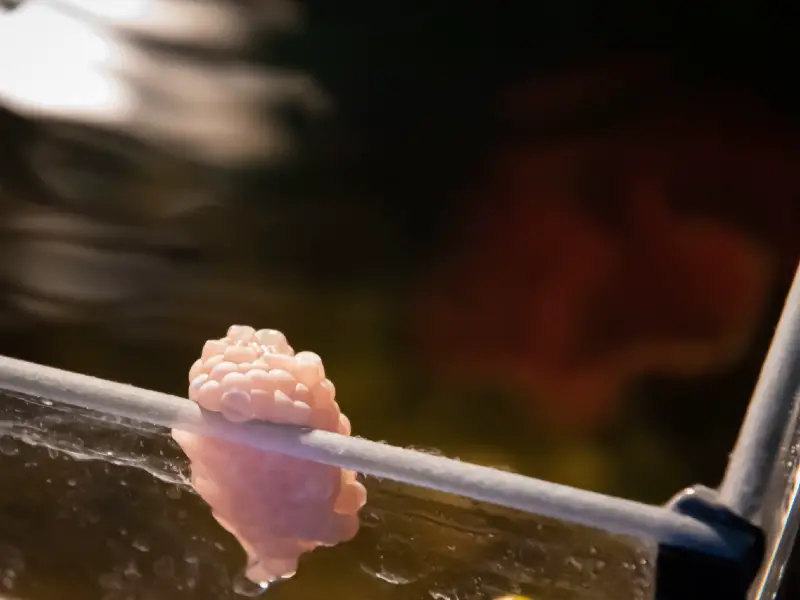
| Category | Rating |
| Care Level: | Very Easy |
| Temperament: | Peaceful |
| Color: | Clear |
| Lifespan: | 2-5 weeks depending on species |
| Size: | 1/75 inch (.034 cm) |
| Family: | Planorbidae, Buccinidae, Ampullariidae, and more |
| Minimum Tank Size: | 5 gallons |
| Tank Set-Up: | Freshwater with plants |
| Compatibility: | Serve as food for some species |
Snail eggs and the ways in which snails either lay or carry them vary by species. Additionally, the ways that they enter your home aquarium are also varied. Perhaps you had a few snails that you deliberately introduced into your tank and before you knew it, you had eggs.
Or perhaps you introduced a new plant (or decoration) into your aquarium without quarantining it for the customary 14 days. And a clutch of snail eggs rode in on the plant. But at 1/75 inch (.034 cm) per egg, you might not have even noticed their presence until the eggs hatched.
Even a whole clutch, which is basically a cluster of eggs in a gelatinous sac, is only about 1/4 inch (.64 cm). They’re easy to miss, especially if they are on the underside of a piece of driftwood or camouflaged on a rock.
Some freshwater snails lay their eggs on the underside of plant leaves or on top of rocks. Others attach their clutches to the aquarium glass. It should be noted, too, that some snails, such as Japanese Trapdoor Snails, are livebearers and do not lay eggs.
Another variation among species is how prolific they are. Assassin Snails and Rabbit Snails, for example, do not reproduce much or often, whereas Bladder Snails and Ramshorn Snails lay tons of eggs and breed often.
Benefits of Aquarium Snail Eggs (and snails!)
There are 2 main benefits of snail eggs:
- Fish food: Some fish, like certain species of loaches, catfish, gouramis, and even goldfish will feast on snail eggs. Word of caution: Be certain that these fish will not be a threat to the other fish in your aquarium, and that your tank is large enough to handle these fish, some of which get very large.
- They turn into snails: Although it’s necessary to control their population, snails do act as tank cleaners, ridding your tank of plant and food detritus, fish waste, and algae. Some snails (Assassin Snails) actually kill other snails, helping to keep prolific snail populations in check. And aesthetically, some snails are really cool looking.
Disadvantages of Aquarium Snail Eggs (and snails!)
- Infestation: It’s very difficult to control the population growth of snail eggs, especially since you might not even see them. And when you have an infestation of snail eggs, you will eventually end up with an infestation of snails.
- They turn into snails: Yes, snail eggs and snails are a blessing and a curse. More snails equal more waste. It’s true that snails consume waste, but they also create it, and if you have too many snails, it will tip the balance of your water parameters and endanger your fish. Additionally, the fact that snails are consuming waste means they are well fed and more likely to reproduce.
Production of Aquarium Snail Eggs
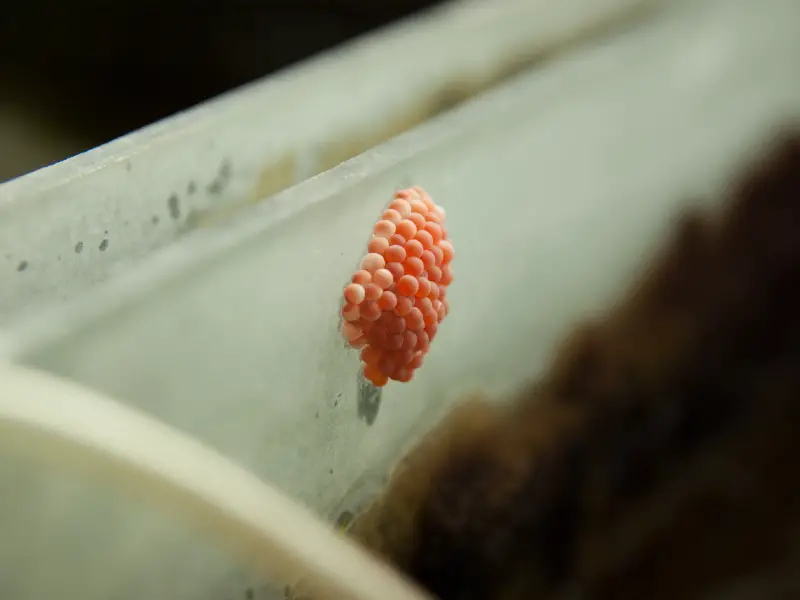
Reproductive Form
Snails have two main forms of reproduction: they either lay eggs or carry their eggs internally. I won’t talk much about the latter here since the focus of this article is eggs that you will find in your tank.
Snails that carry their eggs inside are livebearers, including Malaysian Trumpet Snails and the Japanese Trapdoor Snails that I mentioned before. If you’re interested in learning more about livebearers, check out my article on Japanese Trapdoor Snails.
Other snails lay their eggs on plants, rocks, or even the glass of your aquarium. These egg-laying species include Mystery Snails, Apple Snails, Ramshorn Snails, Assassin Snails, and Nerite Snails.
Reproductive Type
Snails reproduce in 3 ways:
- Asexual: This process basically results in a clone or partial clone. The scientific term for this phenomenon is parthenogenesis. Reproduction occurs without the male, although without male fertilization, only females are produced.
Asexual reproduction happens with some livebearers, such as the Malaysian Trumpet Snail, so you won’t see any eggs in your tank with these.
- The “traditional” male/female pairing: This is sexual reproduction and requires a male and a female snail. These species lay clutches that can easily exceed 200 depending on the snail species. These eggs take anywhere from 1 to 3 months to deposit all the eggs, and from 1 to 5 weeks for the eggs to hatch.
Snails that practice sexual reproduction include Assassin Snails, Brotia Pagoda Snails, Japanese Trapdoor Snails, Mystery Snails, Nerite Snails, and Rabbit snails.
- Hermaphrodite: A hermaphrodite snail is capable of choosing and switching its gender. In terms of reproduction, this means that the snail can lay eggs as a female and fertilize those eggs as a male. Bladder Snails, Pond Snails, and Ramshorn Snails display hermaphroditic reproduction.
Appearance
Aquarium Snail Eggs are usually clear, so they are difficult to see. They’re also tiny: 1/75 inch (.034 cm), which also makes it difficult to see them. Sometimes they appear as a milky pink color, and in Mystery Snails, you’ll see dark spots on the eggs, which is really the embryo showing through the clear egg.
The clutches, or gelatinous sacs, in which the eggs are housed are also clear and about 1/4 inch (.64 cm). The number of eggs in a clutch depends on the species. Ramshorn Snail clutches usually contain about a dozen or two eggs. Mystery Snails can have 150 or more eggs.
If you’re looking to identify them in your aquarium, check under plant leaves or on rocks, or even on the glass of your tank. Mystery Snails, for example, position their clutches above the surface of the water on the glass, and after the eggs hatch, they drop down into the water.
Habitat and Tank Conditions
If you are hoping to raise Aquarium Snail eggs to maturity and hatching, you’ll want to make sure you have live plants, driftwood, and rocks so that they have a place to cultivate their clutches.
Aquarium Snail Eggs don’t need any sort of filtration system, but if those eggs hatch and you have baby snails, you will need a filter to control
A standard filter is sufficient; with Ramshorn Snails, you pretty much need to control nitrate and ammonia levels.
Water Conditions
If you are trying to encourage snail egg growth, warmer water will encourage both breeding and faster hatching. Depending on the species, Aquarium Snails and their eggs require temperatures between 65°F to 80°F (18.3-26.7°C).
If you are hoping to limit the number of snail eggs, lower the temperature, but always watch out for the water parameters required by the other fish and plants in your aquarium.
In the same way, snails and their eggs do better with alkaline water, so keep alkaline water if you want to grow eggs and make it more acidic if you’re engaging in population control. Just remember the needs of your other aquarium inhabitants.
The exception to this is Nerite Snails, who must be hatched into brackish water. If you want to raise Nerite Snails, you will have to move the eggs and whatever plant or decoration they are attached to into a new tank for hatching. This has to do with the conditions in the wild, and the environment must be recreated in the home aquarium if you are hoping for baby Nerite Snails.
If you want to control the snail egg population in your tank, you could try adding a teaspoon of salt to the water, but beware that salt can be harmful to the fish in your tank, so consider all species before taking such an action.
The optimal parameters for the healthy growth of snail eggs (keep in mind they vary by species):
- pH levels: 7.0 to 7.5
- Water hardness: 5 to 15 dKH
- Water temperature: 65°F to 80°F (18.3-26.7°C)
What Size Aquarium Do They Need?
Tank size is not an issue for snail eggs. They will grow and develop in small tanks and large tanks. The issue will come if you get overrun with snail eggs and don’t have a place to put all of the eggs that hatch.
Tank Mates
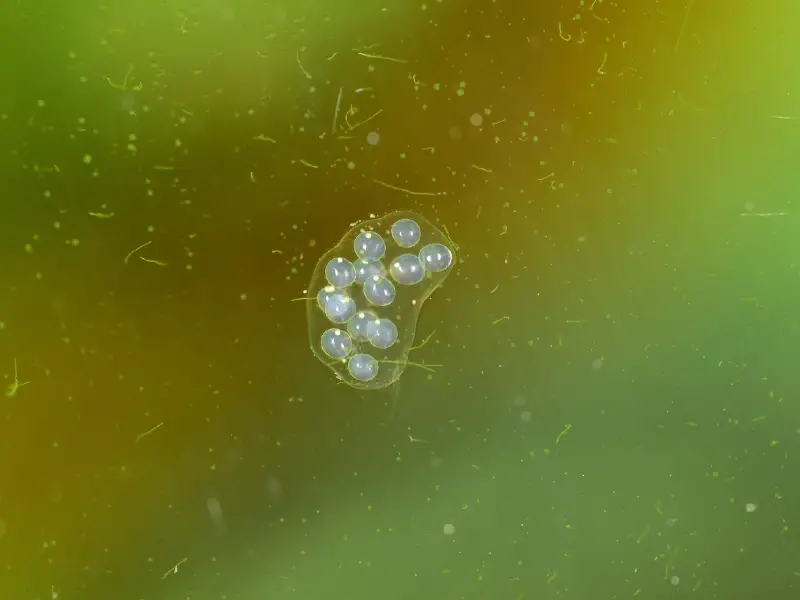
The tank mates you’ll choose for your Aquarium Snail Eggs will depend on your intentions for the eggs. Predatory fish are good choices if you want to control or perhaps even eliminate your freshwater snail population. I mentioned before certain loaches, catfish, and goldfish.
If you’re hoping for cleaner snails, you’ll want to stay away from fish that see them as one of the four food groups.
Good choices if you want to see your snails hatch without incident include Danios, Rasboras, and Tetras.
Diet
Of course, eggs don’t need outside nutrition, but food can impact how many snail eggs you end up with. Overfeeding your fish provides more food for snails which results in more snail eggs.
If you want to control your Aquarium Snail Egg population, you should reduce their access to food, which means making sure you don’t overfeed your fish; pruning plants regularly to decrease detritus; and cleaning some algae on your own in order to reduce the nutrition available to your snails, which will, in turn, reduce the number of eggs that will result.
Population Control
If you need to limit the number of eggs you have in your aquarium, there are a number of steps you can take. The first is to prevent them from getting into your tank in the first place. Quarantine any new plants or decorations for 14 days before adding them to your tank.
You could also dip live plants before adding them to your tank in order to kill any eggs and clutches that might be hiding on the plant. Dips could be mixes of bleach, hydrogen peroxide, or salt. I should mention that even these extreme dip measures are not 100% successful and snail eggs may survive the attempted assassination.
Add predatory fish, described in the Tank Mates section. This method controls the number of snail eggs you have and provides a source of nutrition for your fish.
Keep your tank clean so that snails don’t have as much to eat, thereby reducing the number of eggs you’ll see. Perform regular water changes, remove dead leaves from plants, clean the glass of your aquarium to reduce the algae, and keep the substrate clean.
Reduce fish feedings and offer only as much food as your fish can consume in a 3 to 3 minute period. This will result in less fish waste and extra food settling at the bottom of the tank.
You could physically remove the eggs from your aquarium. Look for the little sacs of eggs and scrape them off and scoop them up out of the tank. You could also remove the plant leaf or decoration the eggs are attached to and scrape the eggs off after removing them from the tank.
Make sure to check under plant leaves and other hiding places where egg clutches could be hiding. If you do physically remove snail eggs from your tank, make sure to dispose of them safely and humanely. Freezing them might not seem humane, but it is one of the less violent ways to keep the eggs from hatching.
Finally, you could add some of the medication used to treat your fish for ich disease. The copper in this medication contains copper, which is toxic to snails and their eggs and will likely kill any eggs in the tank. Keep in mind that this method could be harmful to others in your aquarium, too. Shrimp and other invertebrates could be killed, too, as well as any snails that you might want to keep in your tank.
Also remember that if you poison a whole bunch of Aquarium Snails, you will also have to do some major cleanup in your tank, as a bunch of dead snail eggs is going to create ammonia and nitrates that could endanger your fish.
Are Aquarium Snail Eggs Suitable for your Aquarium?
Freshwater snail eggs are likely to appear in your tank whether you want them or not. If you’re looking for tank cleaners or food for fish, you’ll still need to be mindful of the number of eggs you allow to grow so that you don’t end up with an uncontrollable snail population.
If you’re dismayed by snail eggs and want them gone as soon as possible, you’ll still have to worry about controlling the population. I’ve tried to address the reality of Aquarium Snail Eggs in a way that considers both sides of the spectrum.
Regardless of your attitudes towards snail eggs, you should now have an idea of how to approach the handling of these tiny eggs.
Do you think Aquarium Snail Eggs are a treasure or a menace? Leave a comment below about your experiences with snail eggs. Which do you find are easiest to either control or keep?



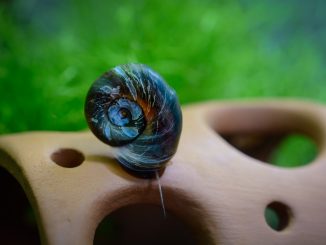
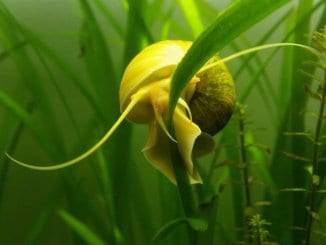

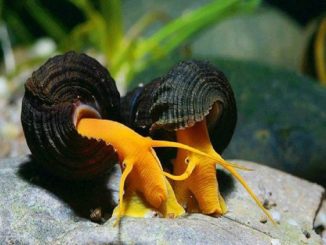
Thanks, I noticed one in my tank today just above water line and assumed it was snails. This is new to me, and I thank you kindly.